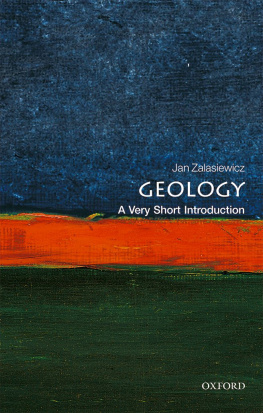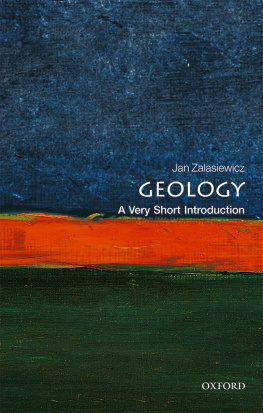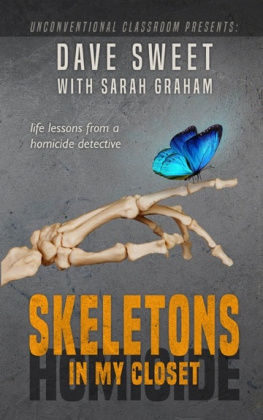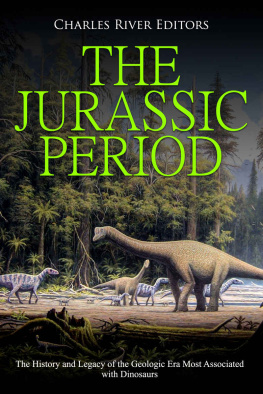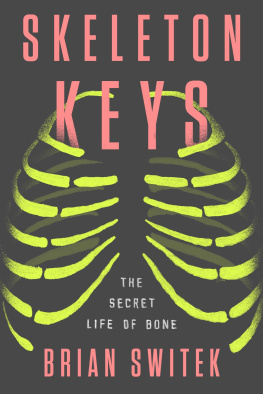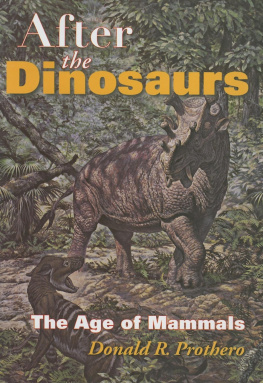
OUP CORRECTED PROOF FINAL, 3/1/2018, SPiSKELETONS
OUP CORRECTED PROOF FINAL, 3/1/2018, SPi
OUP CORRECTED PROOF FINAL, 3/1/2018, SPiJ A N Z A L A S I E W I C ZA N D M A R K W I L L I A M SSKELETONSthe frame of life1
OUP CORRECTED PROOF FINAL, 16/1/2018, SPi3Great Clarendon Street, Oxford, OX2 6DP,United KingdomOxford University Press is a department of the University of Oxford.It furthers the Universitys objective of excellence in research, scholarship,and education by publishing worldwide. Oxford is a registered trade mark ofOxford University Press in the UK and in certain other countriesJan Zalasiewicz and Mark Williams 2018The moral rights of the authors have been assertedFirst Edition published in 2018Impression: 1All rights reserved. No part of this publication may be reproduced, stored ina retrieval system, or transmitted, in any form or by any means, without theprior permission in writing of Oxford University Press, or as expressly permittedby law, by licence or under terms agreed with the appropriate reprographicsrights organization. Enquiries concerning reproduction outside the scope of theabove should be sent to the Rights Department, Oxford University Press, at theaddress aboveYou must not circulate this work in any other formand you must impose this same condition on any acquirerPublished in the United States of America by Oxford University Press198 Madison Avenue, New York, NY 10016, United States of AmericaBritish Library Cataloguing in Publication DataData availableLibrary of Congress Control Number: 2017953468ISBN 9780198802105Printed in Great Britain byClays Ltd, St Ives plcLinks to third party websites are provided by Oxford in good faith andfor information only. Oxford disclaims any responsibility for the materialscontained in any third party website referenced in this work.
OUP CORRECTED PROOF FINAL, 3/1/2018, SPiTo Adrian Rushtonnonpareil colleague and scholar of ancient skeletons
OUP CORRECTED PROOF FINAL, 3/1/2018, SPi
OUP CORRECTED PROOF FINAL, 3/1/2018, SPiCONTENTSixxixiv12160108127149174195225245263267273275
OUP CORRECTED PROOF FINAL, 3/1/2018, SPi
OUP CORRECTED PROOF FINAL, 3/1/2018, SPiThis book arose,as didtheprevious ones wehave written,outof amoment of improvisation, which then somehow had to be carriedforwards to some kind of conclusion. The idea was to take skeletons, the(mostly) hidden framework of biological life, which, in ancient form, has alsoprovided the frameworkin somewhat more exposed and visible formofmuch of our professional lives, and make sense of them in the way thatthey have underpinned the development of complex life on Earth.In making this story take shape, we are deeply grateful for the unceas-ing support and encouragement of Latha Menon and others at OxfordUniversity Press. Latha has an unrivalled ability to see where a narrativeline might be heading for the rocks, and to gently steer it into moreproductive waters, while Jenny Nugee and her colleagues have beencheerfully patient with our perilously close encounters with deadlines,and marvellously efficient in compiling the finished product.As to the subject matter, the content here has been influenced by allthe people who have influenced
us as we have come to grips with fossilskeletons, old and new, in our studies and in our working lives. That is anawfully long list, but includes colleagues such as David and Derek Siveter,Richard Fortey, and the late and much missed figures of Dick Aldridgeand Barrie Rickards. We dedicate this book to Adrian Rushton, who hasinfluenced these pages both directly and indirectly; the range of fossilskeletons he has covered, expertly, has not been rivalled since the days ofthe great Victorian-era polymaths, and the amount of help and supporthe has given to others through his career has been immeasurable. Wealso thank the following for the images that we have used in this bookand for advice on images: John Ahlgren, Peiyun Cong, Ivn Cortijo, JasonDunlop, Dennis Hansen, Tom Harvey, Soraya Marali, David Martill,
OUP CORRECTED PROOF FINAL, 3/1/2018, SPiGiles Miller, Chris Nedza, Mark Purnell, Adrian Rushton, Paul Selden,David Siveter, Derek Siveter, Vincent Perrier, Ulrich Salzmann, BerndSchne, Ian Wilkinson, Xianguang Hou, Xiaoya Ma, and Jeremy Young.We thank our families, tooAsih, Kasia, Milana, Matfor the supportand inspiration that they continually giveand infinite patience, too, aswe steal time to write this book. And our parents too, Doreen, Les, Irena,and Feliks, who gave us the inspiration to be inquisitive.x
OUP CORRECTED PROOF FINAL, 3/1/2018, SPiWhat linksthetumbleweedthathasinvadedtheNorthAmericanplains, the single outstretched canine tooth of a narwhal, thefourth finger of a pterosaur, the carapace of a beetle, and the ancientsubmarine mountains, reaching 5 kilometres tall, at the top of which thecoral islands of tropical oceans just emerge at the ocean surface? These areall forms of skeleton, produced by living organisms in an extraordinarylate flurry of evolution on a planet that was already easing into middle age.Imagine, then, a world where skeletons had not evolved. We wouldnot see birds flying through the air to perch on a tree branch, or a catleaping high onto a garden wall (perhaps to try to catch one of thosebirds), or a crab scuttling on a beach, or a child running through aplayground. We might be forgiven for thinking that a world withoutsuch familiar things would be a bizarre place indeed. But that is just howit was for most of the history of life on Earth.The Earths surface now holds a vast array of skeletons, from micro-scopic to gigantic. Some piles of skeletons, like the Great Barrier Reef ofAustralia, are so large that they can be seen from space, while others,visible only through powerful microscopes, show exquisite preservationof minute structures from hundreds of millions of years ago. Specimensof the most spectacular skeletons have been avidly sought by humans,even in antiquity, and their power to awe remains undimmed. Lookingfrom another perspective, skeletons
en masse, assembled down the yearsand stored within layers of rock, have been crucial in controlling some ofthe Earths most important chemical cycles, and in maintaining a habit-able climate on our planet.In this book we look at skeletons from many angles, and encompassall of those mineral frameworks that have allowed life to engineer the
OUP CORRECTED PROOF FINAL, 3/1/2018, SPiplanet we live on. We look at the skeleton innovations that occurred indeep antiquity, within tiny cells that built forms of scaffolding for them-selves, and how this led to the eventual evolution of the familiar skel-etons of today. We explain the very different strategies by whichskeletons can be built, and we show how these frameworks can engineeran extraordinary diversity of bodies, shapes, sizes, and solutions to theproblem of living.Looking at life on Earth from the perspective of skeletons can help toanswer some big questions. Why are skeletons made from certain mater-ials? Why do some animals have their skeletons on the outside, andothers on the inside? What advantages have skeletons conferred toanimals and plants, and what lifestyle possibilities have they enabled?And how have they re-engineered our planet, in providing the frame-work for sophisticated networks of life that fashioned the evolution ofEarths oceans, land, and atmosphere.How have skeletons, too, helped
human life? The bones of dinosaursand marine reptiles are not only prized as spectacular museum pieces, togive us glimpses of the Earths ancient and dramatic past. Farmers haveused them, too, in a much more prosaic and functional way, albeit in away that would dismay a palaeontologist. And, now, as we enhance ourown skeletons technologically, and build new skeletons to allow us toexplore our world and other worlds, scientists can look to the structureof bone and shell that has evolved over millions of years, to provideinspiration as they construct the new material fabrics of our society.To humans, skeletons have long been more profound symbols, too, ofboth death and permanence, and this resonance has undoubtedlyincreased their fascination. In the course of this book, we will come acrosssome of the scientists who have discovered and studied spectacular skel-etons, living and fossil, and worked to solve the many mysteries of life anddeath on Earth: of how that life came to flourish and developand how itcrashed when those skeleton-building powers periodically failed.What might be the future for skeletons as the Earth grows old? Theinexorable course of our Suns evolution as a star means that there isxii
Next page

